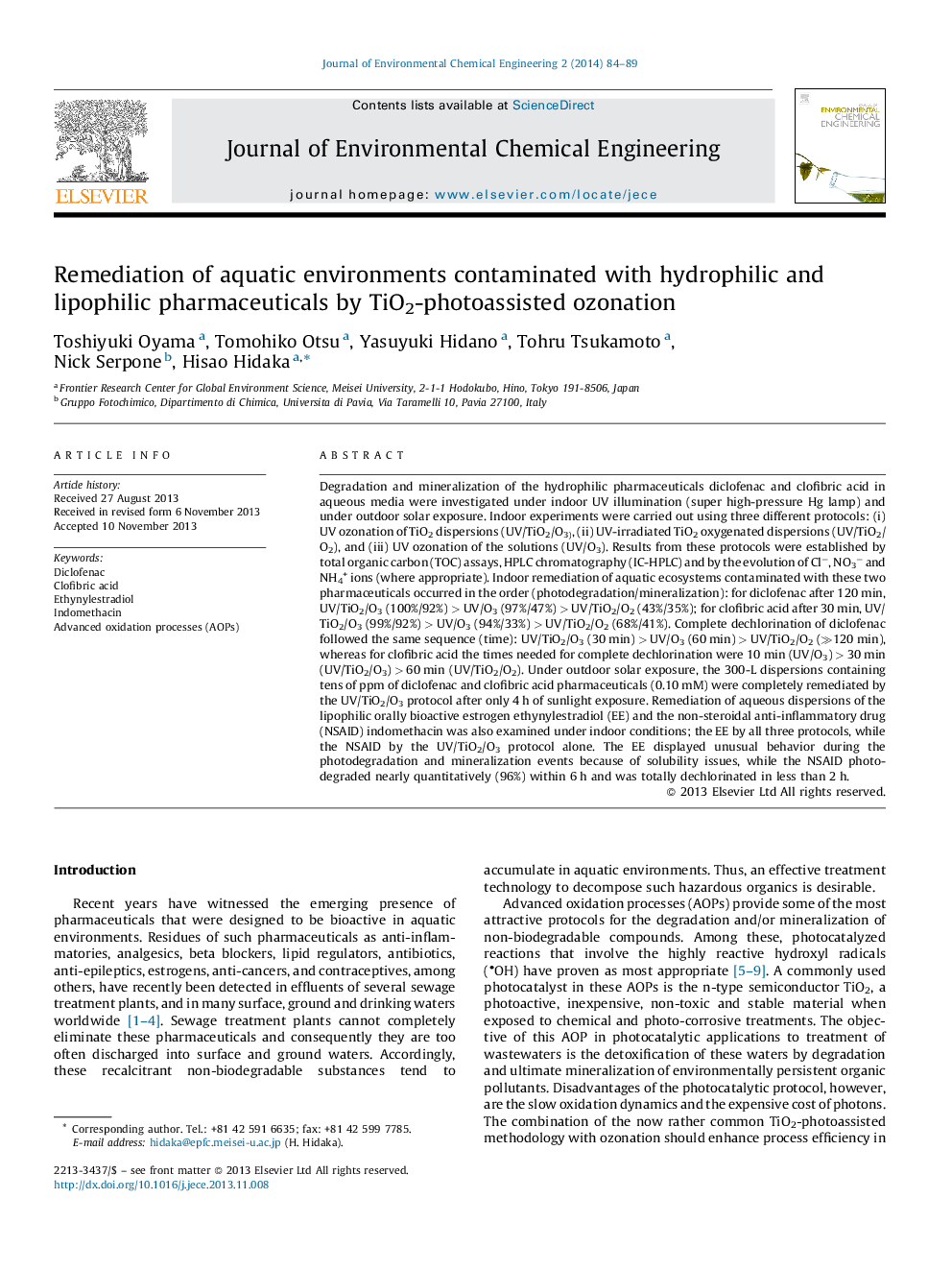| کد مقاله | کد نشریه | سال انتشار | مقاله انگلیسی | نسخه تمام متن |
|---|---|---|---|---|
| 222123 | 464270 | 2014 | 6 صفحه PDF | دانلود رایگان |

Degradation and mineralization of the hydrophilic pharmaceuticals diclofenac and clofibric acid in aqueous media were investigated under indoor UV illumination (super high-pressure Hg lamp) and under outdoor solar exposure. Indoor experiments were carried out using three different protocols: (i) UV ozonation of TiO2 dispersions (UV/TiO2/O3), (ii) UV-irradiated TiO2 oxygenated dispersions (UV/TiO2/O2), and (iii) UV ozonation of the solutions (UV/O3). Results from these protocols were established by total organic carbon (TOC) assays, HPLC chromatography (IC-HPLC) and by the evolution of Cl−, NO3− and NH4+ ions (where appropriate). Indoor remediation of aquatic ecosystems contaminated with these two pharmaceuticals occurred in the order (photodegradation/mineralization): for diclofenac after 120 min, UV/TiO2/O3 (100%/92%) > UV/O3 (97%/47%) > UV/TiO2/O2 (43%/35%); for clofibric acid after 30 min, UV/TiO2/O3 (99%/92%) > UV/O3 (94%/33%) > UV/TiO2/O2 (68%/41%). Complete dechlorination of diclofenac followed the same sequence (time): UV/TiO2/O3 (30 min) > UV/O3 (60 min) > UV/TiO2/O2 (≫120 min), whereas for clofibric acid the times needed for complete dechlorination were 10 min (UV/O3) > 30 min (UV/TiO2/O3) > 60 min (UV/TiO2/O2). Under outdoor solar exposure, the 300-L dispersions containing tens of ppm of diclofenac and clofibric acid pharmaceuticals (0.10 mM) were completely remediated by the UV/TiO2/O3 protocol after only 4 h of sunlight exposure. Remediation of aqueous dispersions of the lipophilic orally bioactive estrogen ethynylestradiol (EE) and the non-steroidal anti-inflammatory drug (NSAID) indomethacin was also examined under indoor conditions; the EE by all three protocols, while the NSAID by the UV/TiO2/O3 protocol alone. The EE displayed unusual behavior during the photodegradation and mineralization events because of solubility issues, while the NSAID photodegraded nearly quantitatively (96%) within 6 h and was totally dechlorinated in less than 2 h.
Figure optionsDownload as PowerPoint slide
Journal: Journal of Environmental Chemical Engineering - Volume 2, Issue 1, March 2014, Pages 84–89